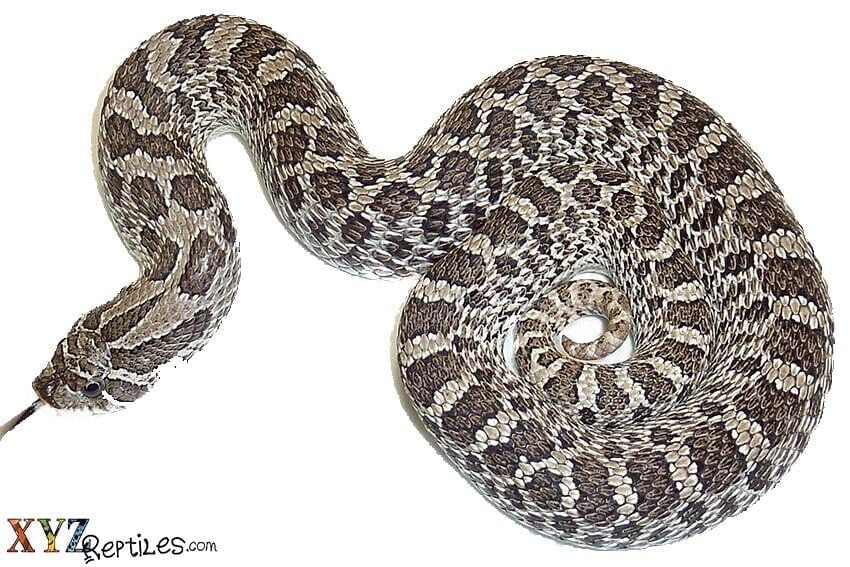
Learning about hognose snake care will make you want to own one of these fun and unique reptiles.
To get started, there are three different species of hognose snakes:
The Southern hognose snake: always appears either in a reddish, tan, or gray color with dark brown splotches.
The Eastern hognose snake: prefers woodlands with sandy soil, coastal areas, and farmlands.
The Western hognose snake: the most common kept for captivity, has three subspecies: plains, dusty, and Mexican.
The usual lifespan ranges from 18 to 20 years with appropriate hognose snake care. They’re not large either, only growing to about 14-40 inches depending on the species and sex. Their usual disposition tends to be on the milder side so it’s rare for a hognose to bite their owners. These snakes are known as rear-fanged snakes since they have a set of fangs in the back of their jaws. They’re also able to flatten their neck and raise up like a cobra to intimidate and ward of predators; however, they’re only venomous to toads and frogs.
A peculiar thing about the hognose snake is their ability to deter predators by playing dead. Their go-to methods include their cobra-imitation technique and, if that doesn’t work, playing dead.
Hognose Snake Care Basics
A hognose snake makes a fascinating pet but they need to be cared for properly to live a long, healthy life. Part of learning the basics of hognose snake care is making sure your snake has the proper lighting and heating and a tank that’s decent sized. They don’t grow too big so they don’t require such a large tank. When it comes to temperature you want to keep one side of the tank somewhere between 85-90 degrees Fahrenheit the other side of it a bit cooler but not below 75 degrees Fahrenheit.
Make sure the habitat has a few inches of bedding made from soil, sand, or a mixture of both so that the snake can burrow. Their snouts make the perfect shovels for helping them escape predators and extreme climate as well as lift up leaf liter and twigs in search of food.
Feeding Your Hognose Snake
Hognose snakes like most other snakes are carnivorous and feed mainly off of toads, but mice are a good substitute. If your snake doesn’t take to the mouse at first, you can trick the snake into eating it by using a scenting method. Simply rub the mouse against a toad to get the scent of the toad onto the mouse. With the western hognose, you typically won’t have this issue. If you’re starting with a hatchling, you can start it out with pinkies and eventually graduate to mice.
Keeping a consistent feeding schedule is an important part of hognose snake care and is just as important as its habitat.
Handling Your Hognose Snake
A hognose snake can sense when you’re uncomfortable, nervous, or scared. If the snake starts to hiss as you’re reaching in the tank, its usually alright to reach in with confidence and pick it up. It’s best to handle your hognose regularly- at least once a week- so that over time it becomes calmer and docile. Just don’t handle it within 48 hours after a meal or while it’s in the middle of a shed cycle.
A hognose can make a great pet for anyone. With the proper care, feeding, and handling, your snake will be slithering and burrowing for years to come. Next time you see this snake for sale, consider these hognose snake care tips and give your pet a healthy and happy life.
Get this beautiful snake pet here https://www.xyzreptiles.com/reptiles/animals/snakes/hognose-snakes-for-sale/.

 Wishlist
Wishlist
 Login
Login